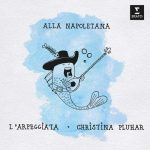
Composer: Vincenzo Calestani, Sigismondo D’India, Francesco Turini, Biagio Marini, Andrea Falconieri, Girolamo Frescobaldi, Dario Castello, Annibale Gregori, Angelo Notari, Bellerofonte Castaldi, Galeazzo Sabbatini
Performer: Ensemble I Gemelli, Zachary Wilder
Conductor: Emiliano Gonzalez Toro
Format: FLAC (tracks)
Label: Gemelli Factory
Release: 2022
Size: 271 MB
Recovery: +3%
Scan: yes
01. Calestani: Damigella tutta bella, Madrigali & arie
02. India: Dialogo della rosa, Musiche da cantar I
03. Turini: Dove ten’vai, Madrigali I
04. Marini: La vecchia innamorata, Scherzi e canzonette V
05. Falconieri: Folia echa para mi señora
06. Frescobaldi: Se l’aura spira, Arie musicali
07. Castello: Sonata Quarta
08. Gregori: Mai non disciolgasi, ciaccona, Ariosi concerti
09. India: Piangono al pianger mio, romanesca (Musiche da cantar I)
10. India: Langue al vostro languir, Musiche da cantar V (Langue al vostro languir)
11. India: Giunto alla tomba, Musiche da cantar III
12. Notari: Intenerite voi, Musiche nuove I
13. Castaldi: Quella que tanto, Primo mazetto di fiori musicalmente colti dal giardino Bellerofonteo
14. Sabbatini: Folgori Giove, Madrigali concertati VI
The giant against whom all Italian composers were measured throughout the seventeenth century was Monteverdi, the absolute monarch of vocal music and, if not inventor, at least the genial promoter of new forms. Emiliano Gonzalez Toro, Zachary WIlder and I Gemelli have chosen to focus on the reflections of this tutelary figure, evoking the master rather than the citer.
It was Monteverdi who “invented” the opera duet, and more precisely the tenor duet, in L’Orfeo (1609), representing the dialogue between Orpheus and Apollo in a virtuosic and symbiotic style: the voices entwine in a profusion of melisma in which it is difficult to distinguish which of the two gods is the father and which the son. The technique was further developed in the seventh book of madrigals by that same Monteverdi, a genuine laboratory of modern music.
It was therefore quite natural for the Ensemble I Gemelli to produce a recital based on twinned voices, and particularly in this tenor tessiture, which dominated the others in the early seventeenth century. They have chosen to represent the peak of the Baroque era, in a programme that mirrors the tutelary figure of the great Claudio. Here, the Damigella tutta bella is not that of the Scherzi musicali, but a piece by Castelani; Dove ten vai is a direct quotation from L’Orfeo, but in a duet version by Turini, while Gregori’s boisterous chaconne is an obvious reference to Zefiro torna.



